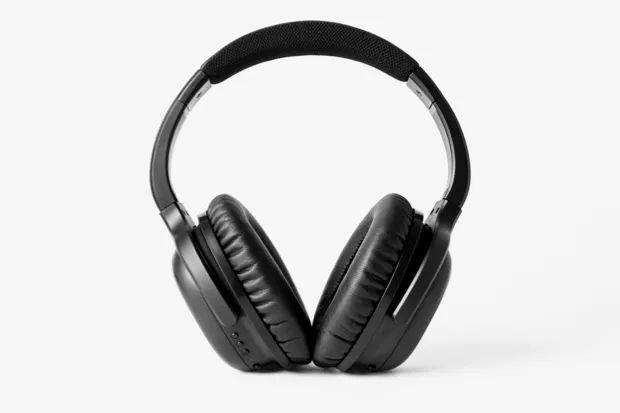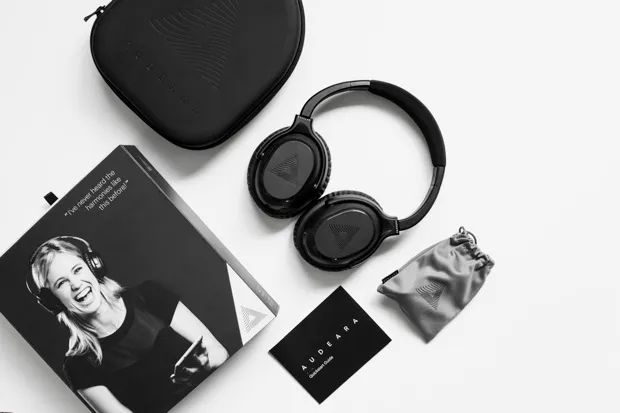What are they?The Audeara headphones are a new pair of cans winging their way over to us from Australia, the land that gave us such aural treats asAC/DC, Kylie and Men At Work, after smashing their $100k Kickstarter target in only 16 hours.
Impressive, so what makes them special?Rather than just pumping out high-quality audio (a noble and worthy cause mostheadphoneshave been content to do over the years) the Audearas do things a little differently – they measure the health of your inner ear and adapt the sound coming out to match your specific audio profile.
Sounds like magic.It’s really not, in fact it has been designed with the help ofdoctors and uses the same technique to test your ear health as if you went to see an audiologist.
Medical tests are never fun.No, they’re not, but as far as getting a check-up goes this is pretty harmless. First you have to make sure you’re in as quiet a room as possible (so no setting them up on the train journey home), and then hook them up to the Audeara app. The test begins by playing tones at different frequencies, and you mark down when you stop hearing them. Simple, and just like thatyou have your own personalised audiogram, a graph measuringyour ear health.
Just like that?Well it takes a bit of time to do, but there are three different levels of test if you’re itching to see how badly you’ve mistreated your ears over the years;Standard, which measures eight tones in each ear,High-detailfor 16 tones, andUltimatefor a whopping 32 points of precision in each ear. The app claims it takes only 10 minutes to do the most accurate one, but it does feel like a lifetime when you’re listening to 32 tones repeatedly in each ear.
Can’t you do this with any set of headphones?That would be nice wouldn’t it, but no, you have to use the Audearas because the tone is specific and needs to be highly accurate to work. As the sound is coming from a circuit board within the headphones themselves, it is consistent across all devices, so it doesn’t matter whether you’re toting the latest iPhone or a budget blower.
Remind me why it’s doing all this again.Because years of cranking your amp up to 11 might shave off a few of those top end frequencies, that’s why! Naturally things will sound a little muddier.If, on the other hand, your sensitivity to bass might not be up to scratch, music might sound a bit shriller.

Because the Audeara headphones know your specific audio profile, they will compensate for these particular audio deficiencies and adjust the sound to balance things out, and as a result you should be able to hear significantly more of the audio spectrum.
And does it work?Yes, but it might not be quite what you expect. With your audio profile sorted, you can set the Audeara effect on four different levels, and the temptation is to whack it all the way up to 100 per cent straight away.
And this is bad because?It’s not so much bad, but underwhelming. At first everything sounds a little bit flat and lifeless, especially if you’re used to sporting headphones that shudder off your head every time you hear the dubstep wobble. But, and it’s a big but, that’s a good thing.
Take the effect down a notch or two and you start to notice some sounds getting completely drowned out by certain frequencies (the ones that your ears have no problem picking up), and without any effect at all your beloved music collection now sounds like a swampy mess. Before too long you’re back at 100 per cent and you can hear pretty much every… single… note… It’s really something quite special.
Well that does sound good.Indeed, it does, and at a reasonable volume as well. Although they don’t feel particularly loud, with everything balanced out it doesn’t need to be, and with ANC (active noise cancelling) switched on, the sound of outside world is snuffed out reasonably well. Before long you’ll be going back through your record collection to see if there’s anything that suddenly sounds significantly better than you remember it.
Even Jason Donovan?Easy now, the old adage ‘garbage in, garbage out’ still applies. If you will insist on listening to heavily compressed pop or metal, you won’t get quite the same effect because all those audio nuances have already been drowned out. Also listening to dodgy MP3s of dubious quality willprobablysound worse, given the multitude of frequencies that have been thoroughly cast asunder in pursuit of a smaller file size.
Probably?As if you’d question that my music collection is anything but the finest high-fidelity audio files…
Anything else we should know?You are not going to have people gawping at your flashy Audearas, they are pretty unremarkable in design and shape, being black and, well, headphone-y. That said, they are light and comfortable, with volume and ANC within easy reach. It’s a shame there is no button to switch your audio profile on and off if you need a quick reminder how much better things sound, instead you have to go through a slow in-app process.
They also give youthe option of using a 3.5mm cable if you do want to listen to music on something that doesn’t rely on Bluetooth (how retro).
Technical specs
Price:£299.99,www.audeara.com
Speakers:40mm Mylar drivers
Frequency response:20Hz - 22kHz
Audio impedance:32 Ohm
Charging Micro:USB
Operation range:≤10m
Wired connection:3.5mm jack

Read more:
